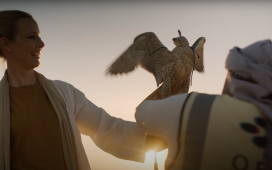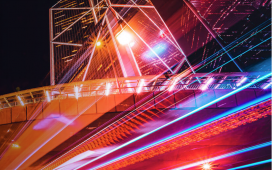
The world’s consumers are chasing imaginary monsters with their mobile phones and marketers have yet to work out how to leverage the latest craze, writes Ema Linklater
Be honest. How many of you have thought about spending your weekend searching for Pokémon over the last month? Loathe it or love it, the Pokémon Go app, which allows you to search for the Nintendo-created creatures in real-time, is one of the best examples of how augmented reality is taking the world by storm. But what is the secret to its success?
For years, we’ve been told that hyper-targeted content and marketing strategies are what win big news. The overwhelming public response to Pokémon Go stands in defiance of this mindset and reveals more about digital marketing than just our thirst for fictitious Japanese cartoons.
In one fell swoop and with next to no advertising spend, the Pokémon franchise that began in 1995 resurrected itself in triumphant fashion. It has crossed genders, races, generations and cultures to become the phenomenon it is. Now it promises to revolutionise advertising.
The app has been downloaded on 5.6 per cent of all Android devices in the US. It has been downloaded on more Android phones than the dating app Tinder and has surpassed Twitter in daily active users on Android.
Having found a uniquely generic targeting approach to marketing, Pokémon Go fever has had a life-altering impact on everything from government policy to trespassing violations and career decisions. It seems we will stop at nothing to catch Pikachu and his friends. The app opened a Pandora’s box that is still spilling its contents.
Last month, Saudi Arabia renewed a fatwa on the use of Pokémon Go, after banning Pokémon cards popular in the 1990s. At least one army in the MENA region banned soldiers from using the app. Aerospace company Boeing has had to tell workers not to use it during work hours. And a man in New Zealand has received messages of support globally after quitting his job to ‘catch ‘em all’.
At the same time, while the business strategy behind Pokémon Go may appear accidental, its execution has been extremely calculated. Niantic Labs, the developer behind the app, is currently making $10 million a day. The app’s overnight success has doubled Nintendo’s share price.
Even Apple believes it can create $3 billion in high-margin revenue from the app by 2018.
Pokémon Go has also developed a philanthropic edge. Syrian graphic designer Saif Aldeen Tahhan has created a series of images based on the game to highlight the plight of people in war-torn Syria. Images include phones held up against cities ravaged by civil war and items needed by citizens making the perilous sea crossing to Europe.
Moving forward, the next big Poké-winners could be in retail and hospitality. Especially since businesses have the option to attract players by purchasing a ‘Lure Module’ that brings monsters to ‘Pokéstops’ for 30 minutes – and customers hot on the heels of those monsters.
This could provide a welcome boost for retailers struggling to reach footfall traffic targets. Likewise, hotel guests can be enticed to restaurants and bars by deals aimed specifically at users.
According to the New York Post, a New York pizzeria saw business increase 75 per cent after it dropped a lure in the game for $10. Other restaurants are advertising that their locations happen to be Pokéstops and ‘Pokémon Gyms’.
If comments made by the CEO of Niantic Labs are anything to go by, the biggest opportunities for brands on Pokémon Go may not exist yet. In addition to in-app purchases, John Hanke – the man at the helm of Niantic Labs – recently told the Financial Times, “there is a second component to our business model at Niantic, which is this concept of sponsored locations”. In a region obsessed with gaming and mobile technology, Pokémon Go is bound to be a huge consumer success when it officially lands in the Middle East.
Early adopters accessing US downloads are already driving big online conversations on social media across the region. Time will tell whether the popularity that Pokémon Go is enjoying will continue or fade – as advertisers leveraging this technology could be the key to aligning with a regional gaming industry that is expected to grow from $1 billion to $4.4 billion.
Ema Linaker is director of digital at Edelman Middle East.









